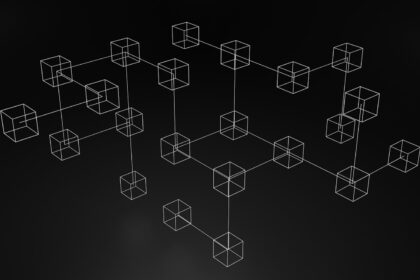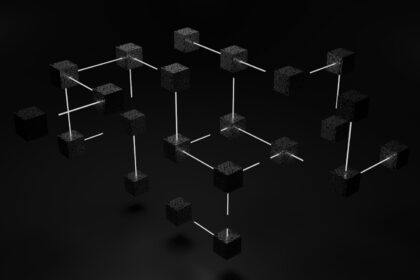DeFi thrives on the ability to combine multiple systems like pieces of lego, enabling developers to create complex applications by layering components already available. This modular approach accelerates innovation by allowing new projects to tap into established infrastructures instead of reinventing core functionalities.
The power of interoperability lies in effective integration, where diverse frameworks communicate and function together smoothly. By reusing proven elements, teams can focus on enhancing user experience and security rather than building every feature from scratch. This method reduces risks and shortens development cycles significantly.
Understanding how different layers interact provides a roadmap for constructing robust ecosystems. Experimenting with composable parts encourages iterative improvements, as each addition builds upon solid foundations. Real-world examples demonstrate that combining liquidity pools, lending platforms, and decentralized exchanges creates novel financial instruments without starting anew.
Blockchain composability: building with existing protocols
Leveraging already established frameworks is the most efficient route to innovate within decentralized finance (DeFi) and other blockchain sectors. Integration of modular components allows developers to combine functionalities from multiple sources, effectively creating complex systems that behave like interconnected LEGO blocks. This approach reduces development time and increases reliability by reusing tested elements rather than reinventing foundations.
Platforms designed for interoperability enable seamless connection between diverse services such as lending, trading, and asset management. For instance, Uniswap’s protocol can be integrated into yield aggregators like Yearn Finance, allowing users to benefit from automated liquidity provisioning without leaving their vaults. Such synergy exemplifies how composability fosters new utility layers on top of proven infrastructure.
The technical essence of composability in decentralized ecosystems
Composability refers to the capability of distinct systems or smart contracts to interact fluidly without friction. It relies heavily on standardized interfaces and permissionless access, which are fundamental for ensuring that individual modules behave predictably when combined. Ethereum’s ERC-20 token standard is a prime example facilitating broad compatibility across various decentralized applications.
Smart contract platforms that support cross-contract calls simplify integration by enabling contracts to invoke functions on others directly. This enables developers to architect workflows where assets or data move securely through multiple protocols in a single transaction–boosting efficiency and user experience simultaneously.
Exploring real-world cases highlights this concept further: Aave’s flash loans allow instant borrowing without collateral if repaid within one transaction block; these loans can be used in arbitrage strategies involving several exchanges. The ability to connect such disparate functions creates innovative financial instruments not feasible in isolation.
Nevertheless, complexity introduces risks around security and coordination. Composable designs require rigorous auditing because vulnerabilities in one component might propagate through the system. Developers must implement robust governance models and fallback mechanisms to mitigate potential failures while maintaining flexibility for upgrades.
Integrating Multiple Smart Contracts: A Technical Overview
Efficient integration of several smart contracts requires a modular approach that leverages protocol interoperability and standardized interfaces. By treating each contract as an individual component, developers can combine them similarly to assembling Lego bricks, enabling flexible and scalable decentralized finance applications. This method enhances the innovation potential by allowing different services–such as lending, swapping, or yield farming–to interact seamlessly within a shared ecosystem.
The ability to chain functionalities across various contracts without compromising security or performance depends heavily on the underlying infrastructure’s support for cross-contract calls and event handling. For instance, Ethereum’s EVM compatibility enables contracts to invoke one another’s methods directly, fostering a compositional architecture where complex operations are composed of smaller, reusable building blocks. This approach reduces redundancy and accelerates deployment cycles in decentralized finance environments.
Key Technical Strategies for Smart Contract Integration
Successful fusion of multiple contracts often hinges on implementing standard communication patterns like delegatecall, interface inheritance, and event-driven triggers. These mechanisms facilitate state sharing and execution flow control between disparate modules. Consider Uniswap’s implementation: its router contract aggregates liquidity pools through well-defined interfaces, thus orchestrating token swaps efficiently while maintaining isolated contract states.
- Delegatecall: Allows one contract to execute code in the context of another, preserving storage scope but leveraging external logic.
- Interface Inheritance: Ensures uniform interaction standards across different modules by defining consistent function signatures.
- Event-Driven Architecture: Enables asynchronous reactions to specific state changes or user actions captured through emitted events.
A practical example involves composable DeFi protocols combining lending platforms with automated market makers. Compound Finance integrates with Curve Finance using contractual hooks that trigger collateral adjustments based on liquidity pool fluctuations. Such integrations exemplify how individual smart contracts serve as interoperable components rather than monolithic entities.
The modular nature of this architectural style encourages developers to experiment by stacking protocols into increasingly sophisticated arrangements that enhance capital efficiency and user experience within decentralized ecosystems. Encouraging incremental learning by starting with fundamental concepts such as ABI encoding before progressing toward advanced multi-contract orchestration fosters confidence and mastery over time.
This systematic layering mirrors assembling Lego sets: once familiar with basic units, users naturally progress towards complex structures by understanding interlocking mechanisms. Therefore, mastering the principles behind smart contract integration unlocks new avenues for creating innovative financial instruments that leverage collective strengths instead of isolated efforts alone.
Leveraging Cross-Chain Interoperability
To maximize the potential of decentralized finance (DeFi), leveraging cross-chain interoperability is essential for seamless integration of diverse networks. This ability allows developers to combine functionalities from multiple ecosystems, effectively enabling a lego-style approach where components can be assembled and reassembled to create sophisticated financial products. For instance, bridging assets between Ethereum and Binance Smart Chain unlocks liquidity pools that were previously siloed, enhancing yield farming strategies without compromising security.
Cross-network interaction fosters innovation by allowing protocols to operate synergistically rather than in isolation. Solutions like Polkadot’s parachains or Cosmos’ IBC (Inter-Blockchain Communication) provide frameworks for message passing and asset transfer across heterogeneous systems. These mechanisms help reduce friction in transaction execution and enable developers to compose complex applications drawing on the strengths of multiple environments simultaneously.
Technical Implementation and Use Cases
The practical realization of cross-ledger functionality often involves wrapped tokens, atomic swaps, or relayer-based approaches that ensure trust-minimized communication channels. For example, the use of wrapped Bitcoin (WBTC) on Ethereum demonstrates how native assets can gain utility beyond their original chain through tokenization and escrow smart contracts. Such arrangements allow DeFi platforms to expand their collateral base significantly.
Moreover, compositional design patterns facilitate modular upgrades without disrupting existing deployments. Protocols like Aave have incorporated multi-chain support by deploying compatible versions on different networks while sharing governance frameworks across them. This layered structure exemplifies how interoperable systems contribute to scalable, resilient ecosystems where innovation compounds effectively through interconnected modules.
Managing State Synchronization Challenges
To ensure reliable state synchronization across decentralized finance (DeFi) applications, developers must implement robust mechanisms that maintain consistency between distributed ledgers and off-chain components. Utilizing event-driven architectures combined with periodic state verification can effectively reduce discrepancies caused by network delays or forks. For instance, incorporating Merkle proofs enables efficient validation of data integrity without excessive resource consumption, which is particularly beneficial when integrating multiple financial instruments.
When connecting various decentralized layers, it is advisable to adopt atomic swaps or cross-chain messaging protocols that guarantee transactional finality before updating dependent smart contracts. This approach mitigates the risk of state divergence in composite systems where multiple independent modules interact. Case studies from projects like Cosmos SDK reveal how inter-blockchain communication (IBC) protocols facilitate secure and synchronized interoperability by standardizing packet transmission and acknowledgement procedures.
Technical Strategies for Maintaining Consistency
One effective technique involves implementing consensus-aware caching layers that temporarily hold state changes until consensus confirmation occurs on underlying ledgers. This reduces premature exposure of unconfirmed states to dependent modules and prevents cascading rollbacks. Additionally, leveraging time-bound locks or optimistic concurrency controls within smart contract logic helps avoid race conditions during parallel transaction processing.
A practical example comes from DeFi aggregators which combine liquidity pools from different sources. They frequently employ snapshot mechanisms combined with nonce tracking to ensure that price feeds and liquidity data remain synchronized despite asynchronous updates from multiple protocols. This method allows users to interact seamlessly while preserving accurate balances and exchange rates.
- Event indexing: Collecting logs efficiently accelerates state reconstruction after network interruptions.
- State channels: Off-chain transactions finalized periodically on-chain reduce synchronization overhead.
- Checkpointing: Regularly saving global states minimizes the impact of node failures or chain reorganizations.
In multi-protocol environments, governance frameworks play a critical role in defining update frequencies and conflict resolution procedures. Clear rules for prioritizing conflicting transactions help maintain system integrity during high-load scenarios. For example, some platforms implement staking-weighted voting mechanisms to determine which version of the shared state should be considered canonical in case of disputes.
Ultimately, managing synchronization challenges demands continuous monitoring tools capable of detecting anomalies such as double spends or stale data propagation. Combining real-time analytics with alerting systems allows operators to react swiftly, ensuring smooth integration across diverse financial primitives. As innovation progresses, adopting modular architectures designed for seamless interoperability will further enhance resilience and trustworthiness in decentralized ecosystems.
Optimizing Upgrade Paths: Enhancing Innovation Through Seamless Integration
Prioritizing modularity and clear interface standards enables smoother transitions during enhancements, reducing friction and preserving user trust. Treating each iteration like a lego piece that fits effortlessly into the broader ecosystem ensures diverse components align without disruption, accelerating progress in decentralized finance applications.
Advanced layer interconnections showcase how cumulative improvements can multiply value–DeFi platforms leveraging composable elements from multiple networks demonstrate that orchestrated upgrades not only boost functionality but also unlock new use cases. Encouraging collaborative design among teams fosters robust innovation cycles anchored in practical interoperability.
Key Insights and Future Directions
- Incremental changes guided by standardized APIs reduce backward compatibility issues, making it easier to integrate novel features without sacrificing stability.
- Cross-chain communication protocols act as bridges, allowing compositional layers to coexist and evolve while maintaining coherent user experiences.
- Automated testing frameworks tailored for upgrade scenarios enhance reliability by catching integration faults early in complex multi-protocol environments.
- Incentivized governance models empower stakeholders to collectively steer upgrade timing and scope, balancing innovation speed with security considerations.
The trajectory points toward ecosystems where protocol components resemble interconnected building blocks–each upgrade not an isolated event but a harmonious extension of a living network. This approach nurtures both technical resilience and creative synergy, enabling developers to assemble novel financial instruments quickly from pre-existing modules. As these mechanisms mature, expect more fluid transitions that preserve composability while propelling the entire field toward richer functionalities and broader adoption.





